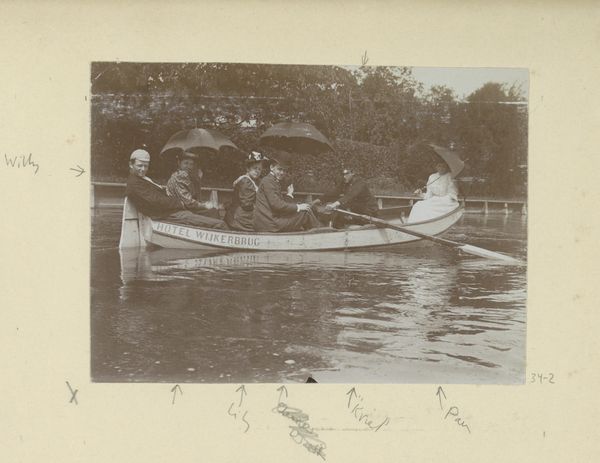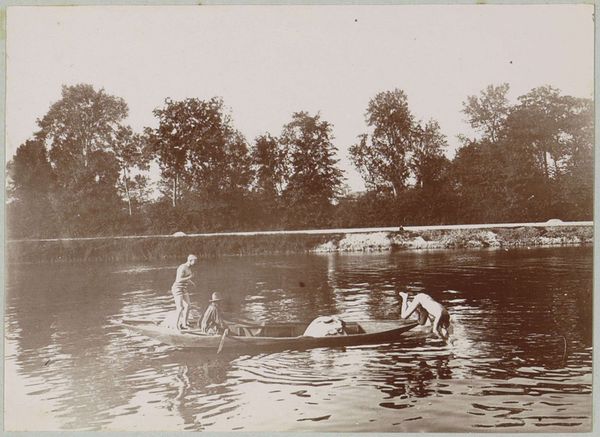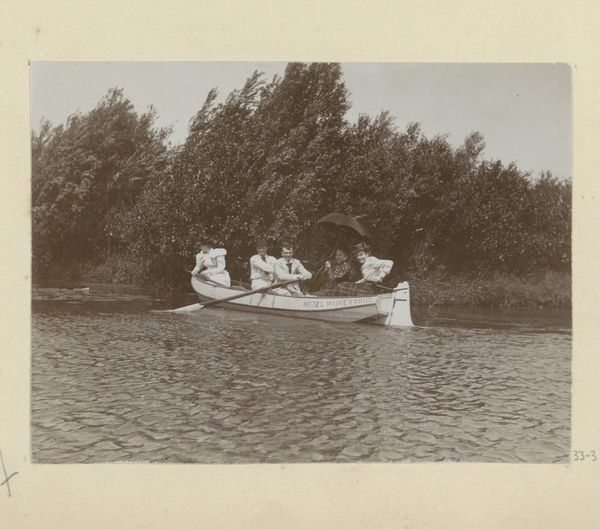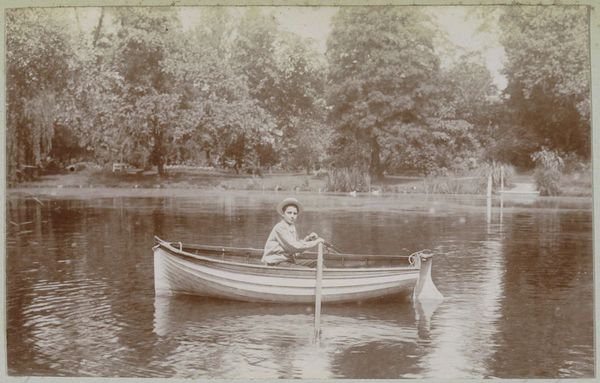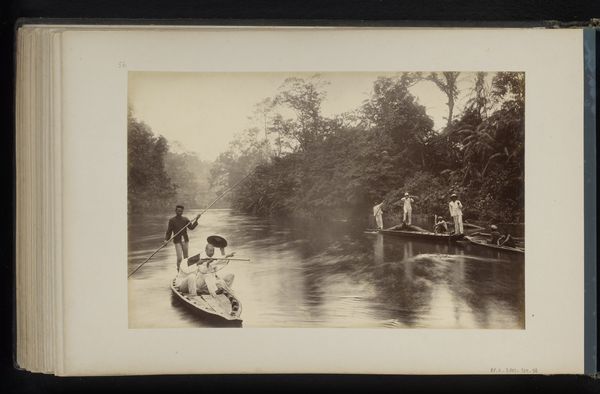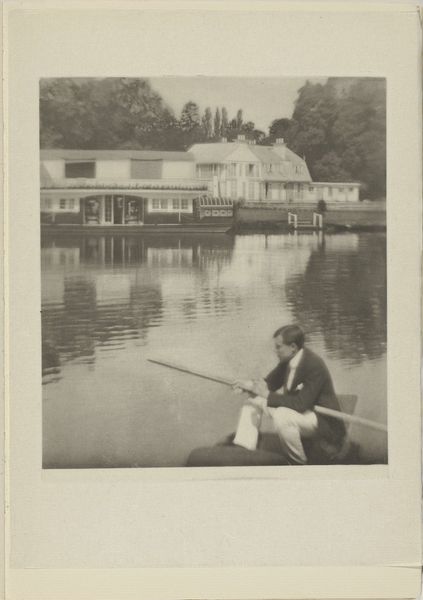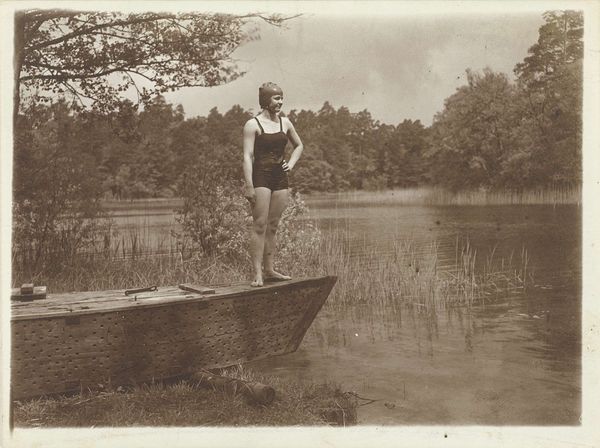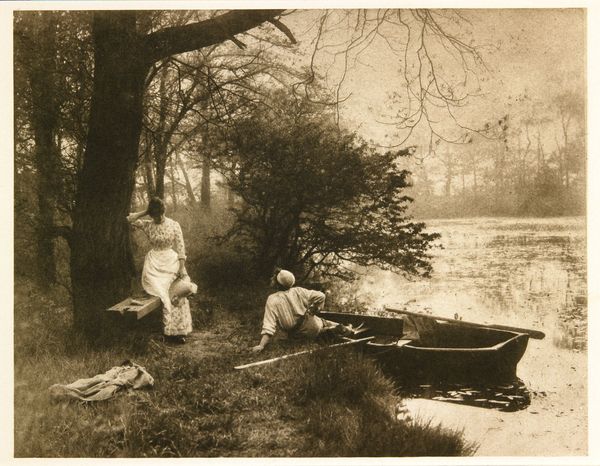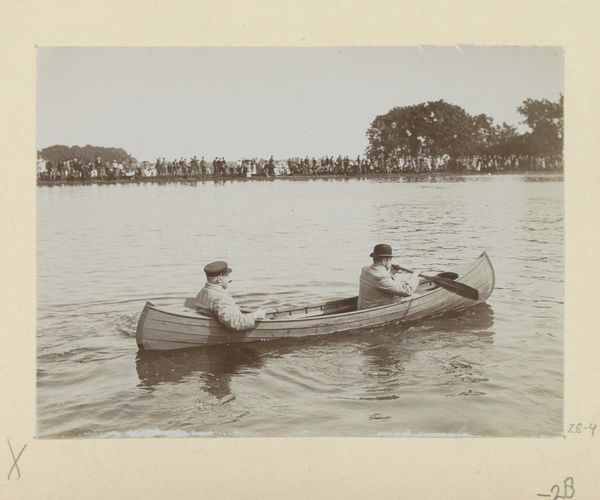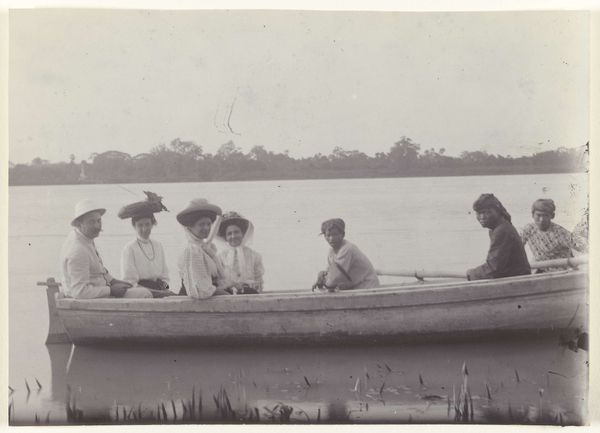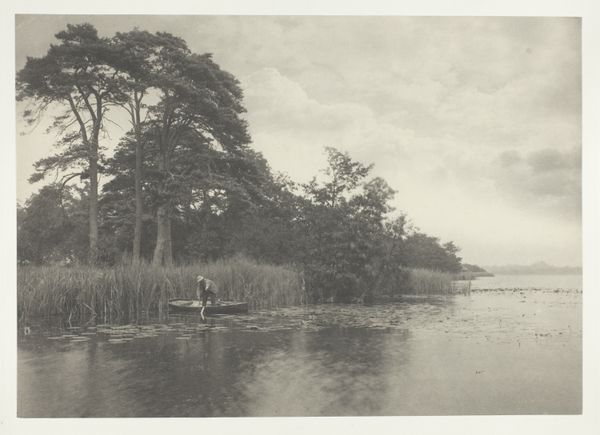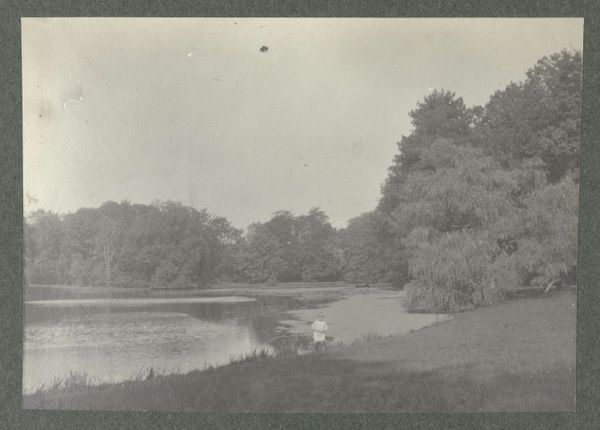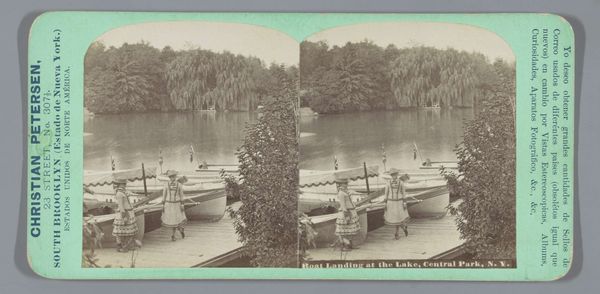
Portret van Johannes Cornelis Heijning en Margaretha Eugenia Fransen van de Putte in een kano 1913
0:00
0:00
geldolphadriaankessler
Rijksmuseum
Dimensions: height 73 mm, width 98 mm, height 198 mm, width 263 mm
Copyright: Rijks Museum: Open Domain
Curator: The piece before us, dated 1913, captures a moment of tranquil leisure. The Rijksmuseum holds this photograph by Geldolph Adriaan Kessler, titled "Portret van Johannes Cornelis Heijning en Margaretha Eugenia Fransen van de Putte in een kano," meaning "Portrait of Johannes Cornelis Heijning and Margaretha Eugenia Fransen van de Putte in a canoe." Editor: It’s lovely—like a page torn from a novel. Melancholy, almost. They seem so proper, so contained, even amidst what should be carefree fun. There is the visual stillness, like holding breath and the lake in front of them reminds me about Virginia Woolf. Curator: That sense of stillness certainly permeates the photograph. Considering the context of the early 20th century, we can understand that formal portraiture, even in informal settings, remained the norm. Their clothing and postures were all performative to class and cultural rituals. Note the white dress on Ms. Fransen van de Putte, with some kind of drapery going all around, also note the little hat on top of her head, quite fashionabble back then, as much as Mr. Heijning's tailored suit with matching tie. The flag could point to the family's social status, too, of course. Editor: Flags always speak volumes, don't they? It’s interesting how the flag, while seemingly indicating a place, a belonging, can also signal exclusion—a demarcation of “us” versus “them.” And you know, it adds a strangely competitive edge to the scene, like, "we are winning the race", that contrasts deeply to the serene image. I'm finding myself imagining their conversation to be utterly forced. Curator: Forced or not, these types of portraits also served to preserve memories. What could a boat symbolise here? What psychological projections where triggered when people sailed in water? The couple canoeing is an old topos in arts. Editor: Right! It might signal the waters of the unconscious, or a journey into unknown parts of themselves. It invites exploration of the deeper meanings, to me, about how they relate each other, in still waters as on wild rivers. I do feel their psychological drama. Curator: A valid point. The landscape itself offers contrasting readings. The smooth lake contrasts the bushy thicket. Do they point to unknown challenges? Does the landscape participate as a subliminal communication? Editor: I'd like to think that both knew very well the undercurrents beneath a superficially harmonious partnership, as it seems! Curator: Well, in either case, the image functions as a beautiful study of a very complex world. Editor: True. A silent poem indeed.
Comments
No comments
Be the first to comment and join the conversation on the ultimate creative platform.
